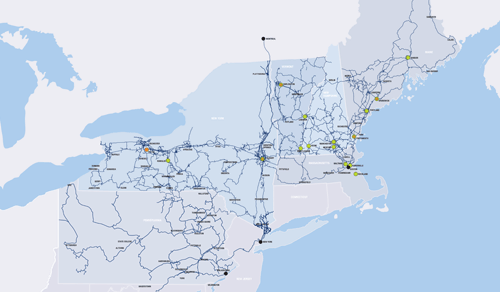
When a disaster strikes your business, the consequences are dire. Production shuts down. Employees are unable to perform their duties. Requests from clients and customers go unfulfilled. Vital data gets lost. Some companies never recover.
Here’s a list of 4 areas that you should focus your attention to try to avoid downtime.
1) Test, then Test Again
 Some companies view their disaster recovery as a set-and-forget prevention tactic. But the wrong time to find out that your disaster recovery plan doesn’t work is when a disaster strikes. Some organizations have a great plan on paper, such as redundant connectivity, outsourced data centers and replication and recovery software, but in many cases the failure to test these plans can often lead to prolonged downtime. In fact, if you’re not testing your entire system — including taking down one of your redundant network connections, your primary data center and testing the recoverability of your data — then you run an even bigger risk: you could be betting your entire company’s future on a plan that didn’t work when you needed it most. A good DR strategy should be easy to test, and many experts believe a test should be performed at least quarterly.
Some companies view their disaster recovery as a set-and-forget prevention tactic. But the wrong time to find out that your disaster recovery plan doesn’t work is when a disaster strikes. Some organizations have a great plan on paper, such as redundant connectivity, outsourced data centers and replication and recovery software, but in many cases the failure to test these plans can often lead to prolonged downtime. In fact, if you’re not testing your entire system — including taking down one of your redundant network connections, your primary data center and testing the recoverability of your data — then you run an even bigger risk: you could be betting your entire company’s future on a plan that didn’t work when you needed it most. A good DR strategy should be easy to test, and many experts believe a test should be performed at least quarterly.
2) Focus on RPO & RTO
Being able to recover from a disaster is key, but how quickly and completely are you able to recover? Recovery time objectives (RTOs) that are extremely slow mean more costly downtime for your business. Hours and even days of downtime can cripple your company and damage your reputation with customers.
Huge recovery point objective (RPO) windows mean you are losing valuable data. Every hour between the time data is generated and backed up increases the amount of information you could lose during an outage. To ensure the kind of RPO / RTO your organization needs, make certain you have all the pieces of the puzzle covered. Do you have redundant connectivity? Is your network configured properly to failover if one of these connections were to fail? Are you able to put into motion an automated recovery process that can achieve an aggressive RTO? How simple is the process?
3) Network & Data Center Diversity
 When your company replicates or backs up data locally, you have ready access to that data with lower latency. But what if that location is affected by the same outage that affects your company? Many experts believe that a “just right” approach to finding a DR site means that you should aim for about 100 miles of distance between your primary and secondary data center. If you’re replicating to the cloud, you’ll want a cloud provider that’s close enough, but not too close, to your primary location. If you can’t connect properly to your applications then your DR plan simply won’t work. Don’t overlook the importance of connectivity. Redundant connectivity is ideal for companies that understand the value of uptime. Ensuring those network connections are properly configured and maintained are a critical piece to your DR plan.
When your company replicates or backs up data locally, you have ready access to that data with lower latency. But what if that location is affected by the same outage that affects your company? Many experts believe that a “just right” approach to finding a DR site means that you should aim for about 100 miles of distance between your primary and secondary data center. If you’re replicating to the cloud, you’ll want a cloud provider that’s close enough, but not too close, to your primary location. If you can’t connect properly to your applications then your DR plan simply won’t work. Don’t overlook the importance of connectivity. Redundant connectivity is ideal for companies that understand the value of uptime. Ensuring those network connections are properly configured and maintained are a critical piece to your DR plan.
4) Develop a Formal Plan
Having a formal disaster recovery plan means more than simply having backup and recovery resources in place. The minutes and hours after a disaster is not the ideal time to improvise a course of action.
Your company needs to understand which data and applications are mission-critical. Steps to maintain business continuity after a traumatic incident need to be planned and documented. A risk assessment should be conducted, and specific RTOs and RPOs should be established. Many organizations seek a third-party expert to help them develop these solutions. Non-technical managers and executives have a responsibility to ask questions. Don’t simply assume that because you’ve spent a lot of money on IT that it will all just work when you need it to. Challenge the status quo and find out how solid your current plan is, and if it’s not documented and readily available, then chances are you’re at risk for downtime.
IT Resilience – A Holistic Approach
If you’re not sure that you have what it takes to recover from a downtime event, you’re not alone. It’s never too late to start asking the hard questions and look at all the angles. Is your data protected? Are you replicating the data to achieve your RPOs? Are you certain your connectivity will be there if you need it? Do you have true redundancy and is it properly configured? Is your data just backed up, or do you have a secondary data center that can handle your production workloads? When was the last time you tested your plan? The list of questions goes on and on.
At FirstLight, we offer a variety of solutions to help increase your resilience against downtime, including redundant network connectivity, a DRaaS solution leveraging replication and recovery software and our own cloud and data centers, as well as communication solutions that can remain up and running even if your primary location(s) are unreachable.
Not sure if you’re properly protected from downtime? Download our white paper: Avoiding Downtime – The C-Level Guide to Managing Technology Risk.






















